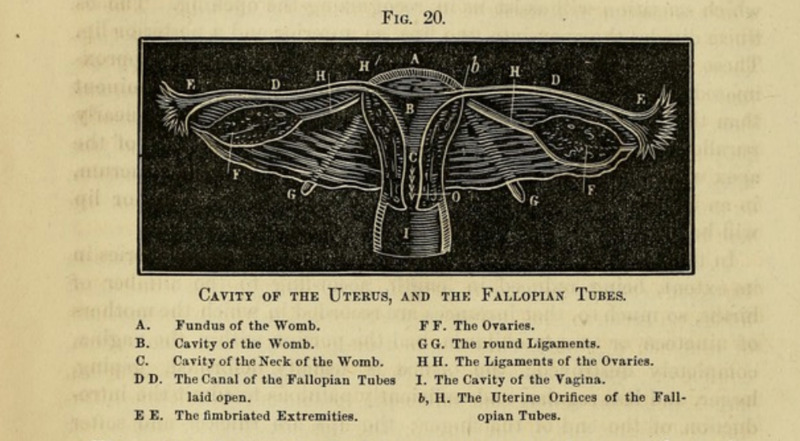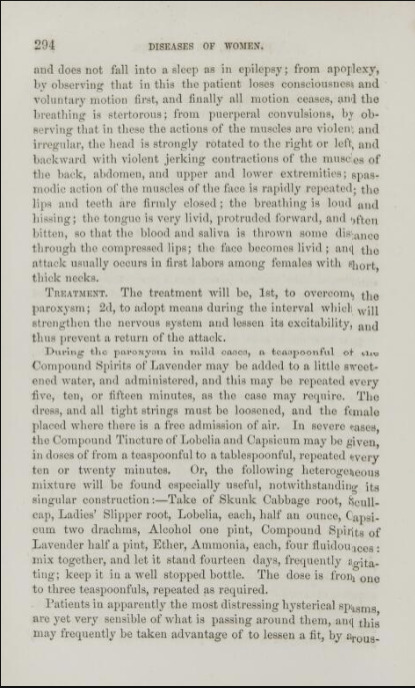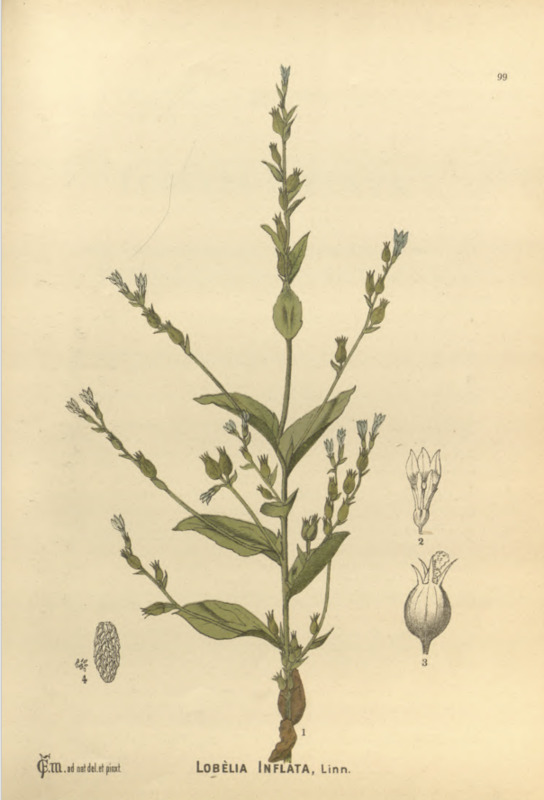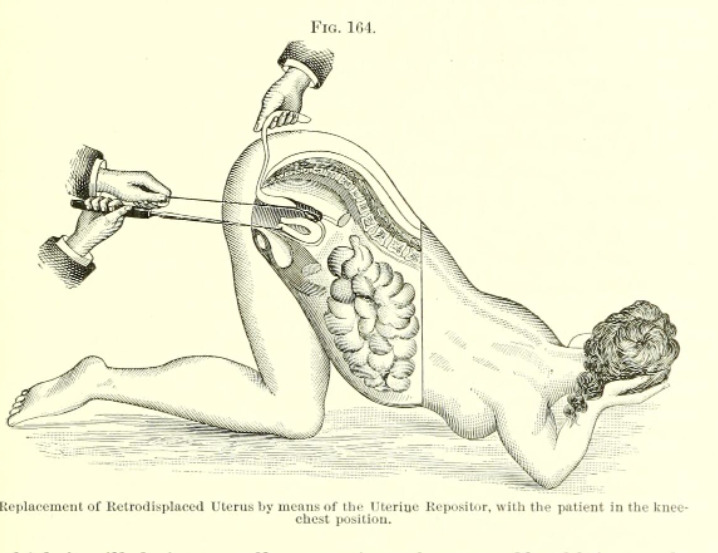Women's Medical history and hysteria treatment by Eclectic Medical Physicians
Eclectic physicians believed in exercise and temperance to keep women healthy for child-bearing. "One of the most important means to preserve health among females, to strengthen and invigorate the reproductive organs, as well, indeed, as the whole system throughout, is exercise." Dr. King.
He goes on to describe other ways for women to stay healthy, and to avoid restrictive clothes like corsets. Corsets were believed to cause diseases of the liver, reproductive organs, and stomach. "But as so long as man pretends to admire a wasp-like waist, an enormous rotundity of hips, and a pale, sickly complexion, so long will woman destroy herself to please him, unless she better and more correctly educated than ordinarily." Dr. King
Eclectic physicians were proponents of exercise and sanitation for the prevention of disease. But what caused disease in women? What were the treatments recommended by eclectic physicians? These next pages will show examples of eclectic medicine practiced in the Gilded Age.
One prominent disorder particular to women deserves mention. Hysteria was a common diagnosis for women in the 18th and 19th centuries. It was not only a vexing problem for traditional medical doctors but eclectic physicians who recommended different plants for the treatment of hysteria.
Hysteria was a female disorder that supposedly arose from the uterus and the nerves of the female organs.
"Hysteria is a disease connected with some derangement or morbid condition of the reproductive organs and may be excited into action by various causes, as want of sleep, excessive fatigue, disordered digestion, sudden mental shocks, as joy, fear, grief, etc, excitement of the reproductive organs, or the venereal sense, indolence, high living, sedentary habits, etc. "
Medical Historians have studied hysteria and what it was. Medical descriptions sound like it would have been something medically significant like epilepsy, fever induced seizures, or even induced from mercury and other treatments. Mild cases could have been anxiety and self expression.
Regardless of what hysteria was or was not, the diagnosis was attributed mainly to the uterus/womb of women. Physicians felt that any deviance in anatomy from the majority of most women, like a retroverted uterus (occurs normally in 10-15 percent of all women) could be the root cause of hysteria. To fix it, they would manipulate the uterus from within the vagina to make it face forward (anteverted). As soon as they did this, they felt this would cure severe cases of hysteria. It was not a wandering womb, rather a normal anatomical variant. The uterus could also get displaced due to tumors or cancer, which would definitely cause or mimic hysteria symptoms.
Treatment by eclectics varied for mild, moderate, and severe cases of hysteria as discussed in the image from Dr. King's textbook. Lobelia and/or lavender were used. Lobelia was a significant plant in Thomsonian medicine. It was used for many different female conditions and is mentioned frequently. It was also used in obstetrics. Lobelia was also attributed to Native Americans and their treatment of syphilis. "Lobelia was originally a Thomsonian medicine and used to make a patient vomit. It was the cornerstone of Thomsonian practice. It was later picked up by others and incorporated into eclectic medicine." (John Haller, PhD)
How were eclectics different from traditional physicians in their treatment of hysteria? The plants. But even eclectics resorted to physical treatments of normal uterus conditions that were described in traditional texts. These involved moving the uterus up into the pelvis to stop attacks. The image shows the technique to be used to put the uterus back and to treat hysteria. This image was found in a traditional medical textbook, but Dr. King's book also describes stopping a severe case of hysteria by pushing the uterus to normal by using fingers to do so.



